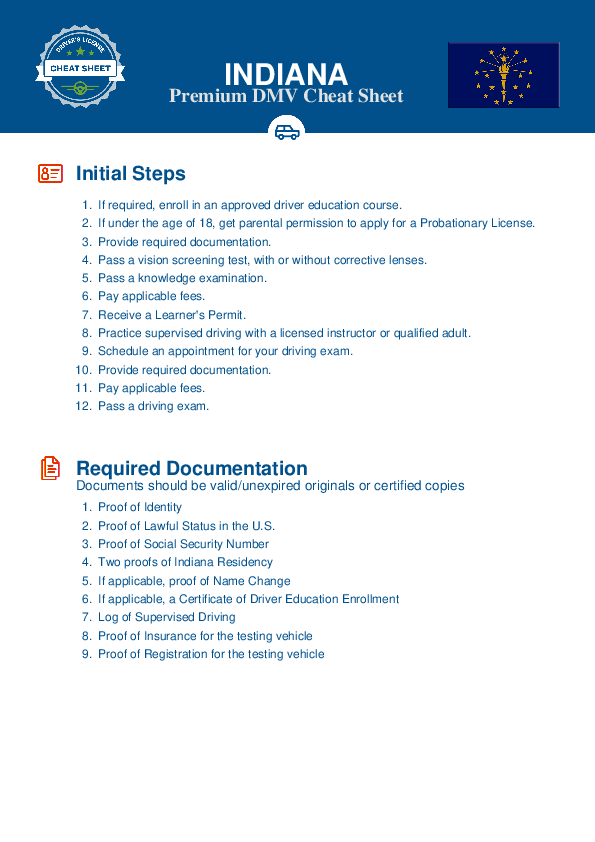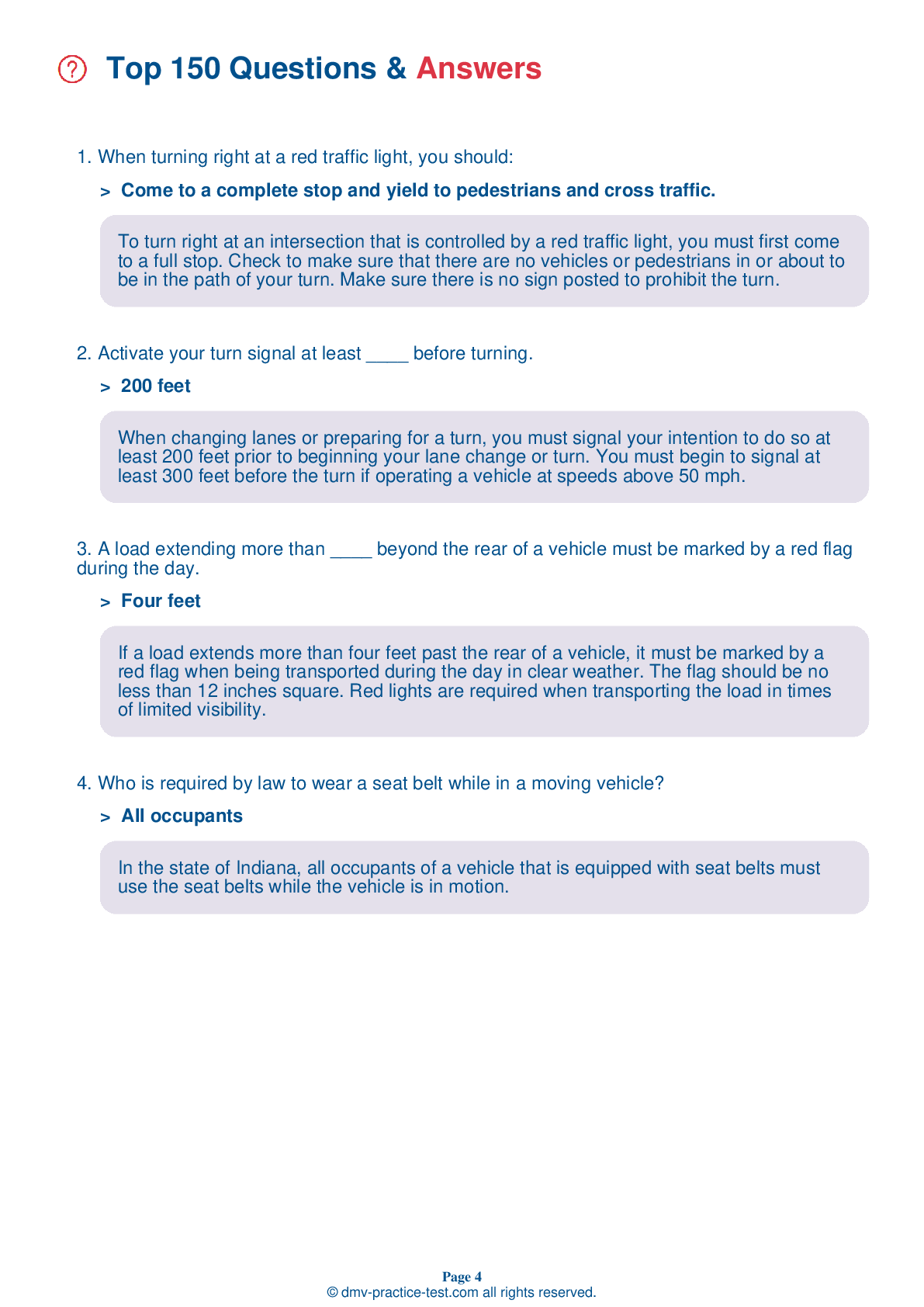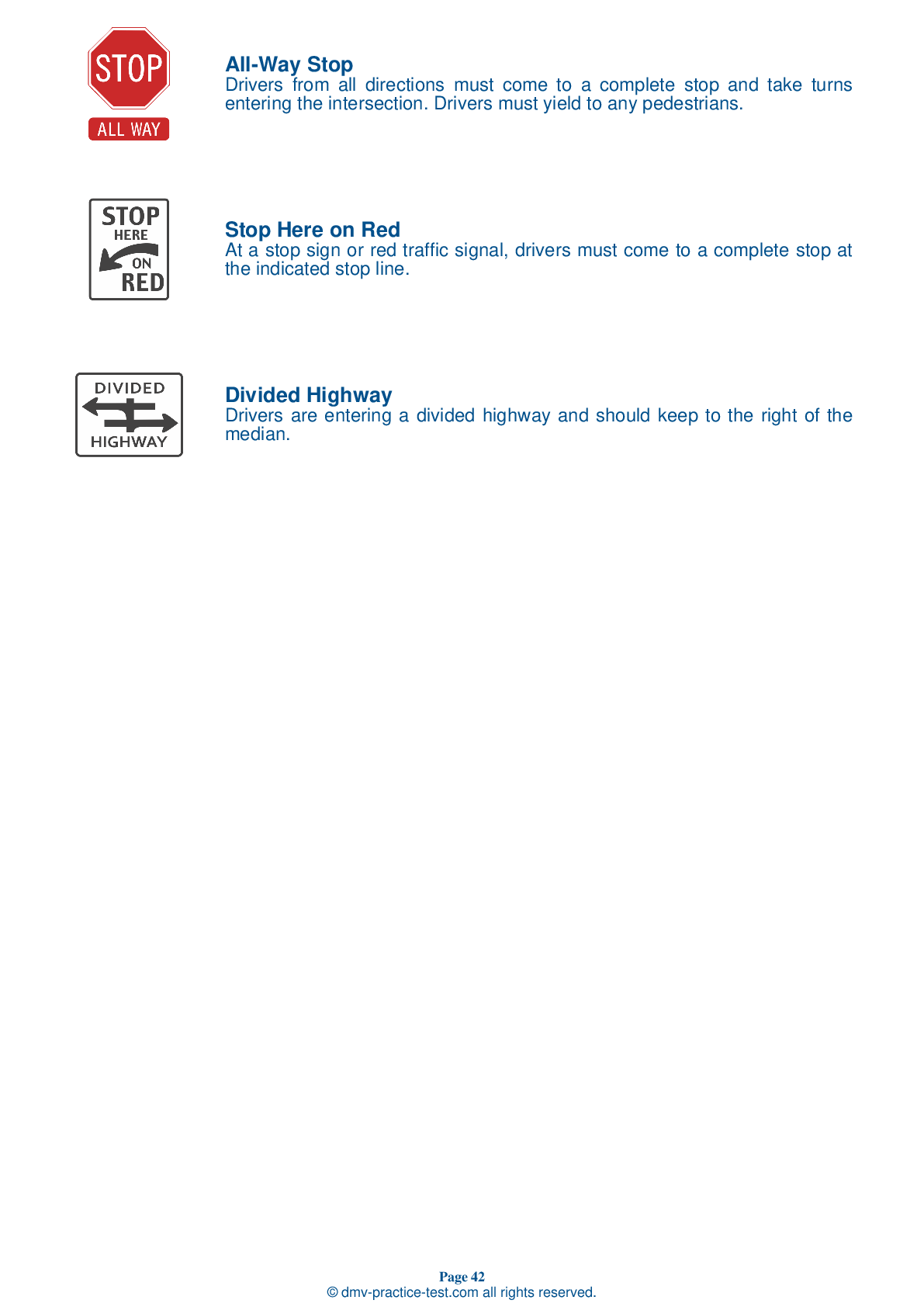FREE Indiana DMV Practice Test #7 Page 4 of 5
This set of Indiana DMV practise tests has been updated for January 2025. It includes questions based on the Indiana Driver Handbook's most significant traffic signals and laws for 2025. Use actual questions that are very similar (often identical!) to the DMV driving permit test and driver's licence exam to study for the DMV driving permit test and driver's licence exam.
On the practise exam, each question gets a tip and explanation to help you remember the concepts. The written component of the official Indiana DMV test will include questions about traffic rules, traffic signs, and driving statutes, as well as information from the Driver Handbook.
To obtain a passing grade, you must correctly answer 44 of the 50 questions. Take our DMV practise exam to help you prepare for your Indiana instruction permit or driver's licence.
The DMV exam is available in several languages.
Using any kind of testing assistance will result in an automatic fail, and the DMV may take additional action against your driver's licence, so stay away from it.
28 . A speed restriction sign:
Curve and turn warning signs often have attached advisory speed signs that show a recommended driving speed for drivers in the curves and turns. Although a driver may feel comfortable driving at a higher speed in fair weather, they should never do so under rainy, snowy, or icy conditions.
29 . What is a "No zone?"
"No zones" are the large blind spots around trucks and other large vehicles. Drivers of smaller vehicles should avoid lingering in "No zones."
30 . This road sign means:
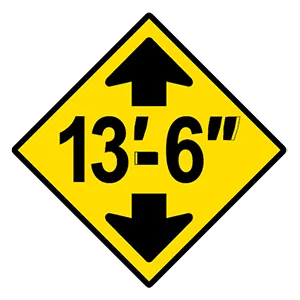
This sign indicates that the overpass ahead has a low clearance. You should not proceed if your vehicle is taller than the height shown on the sign (in this case, 13 feet 6 inches).
31 . Your brake lights tell other drivers that you:
Your vehicle's brake lights indicate to other drivers that you are slowing down or stopping. Your brake lights should always be in working order when you are driving on any roadway.
32 . This sign means:

Circular traffic signs indicate upcoming railroad crossings. This sign tells drivers that they are approaching a railroad crossing and should be looking for signs of an oncoming train.
33 . On the freeway, you see a "Merging traffic“ sign. You should:
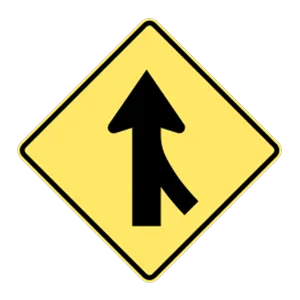
When on a roadway with two or more lanes, you should make room for entering vehicles. If there is no one driving next to you, move over one lane.
34 . Before turning, you should:
To complete a turn safely, you should activate your turn signal three to four seconds before your turn.
35 . This sign means:
.png)
Construction zones pose dangers to both drivers and construction workers. Orange highway construction signs warn drivers to be careful when encountering construction zones. This sign tells drivers that a flagger is ahead and will be giving directions that should be followed.
36 . A speed limit is:
A speed limit is the maximum or minimum legal speed you can travel on a road under ideal conditions. You may drive more slowly than the posted speed, but it is illegal to drive any faster. You must drive more slowly where signs or signs indicate a school zone or work zone speed limit. If conditions such as road construction or bad weather make the posted speed unsafe, drive under the speed limit.
37 . A solid yellow line on your side of the centerline means:
A solid yellow line next to your lane means that passing is not permitted from your direction.
38 . When changing lanes on a highway, you should:
Any time you want to change lanes, you should properly signal your intentions well in advance, check your mirrors, and check your blind spot. You can check your blind spot by glancing over your shoulder in the direction that you plan to move.
Need Car Insurance? No problem!
Compare the best rates in Indiana and find a personalized policy that meets your needs.
1. Are You Currently insured ?
2. Married ?
3. Do you own your Home?
4. Do you have more than 1 car ?
5. Have you or a Family Member Honorably Served in U.S. Military ?
6. Your Name
7. Age
8. Zip code
IMPORTANT REMINDER:Auto Insurance is Mandatory to drive in Indiana. Get covered before you hit the road to avoid any fines.
Ranked by best match
